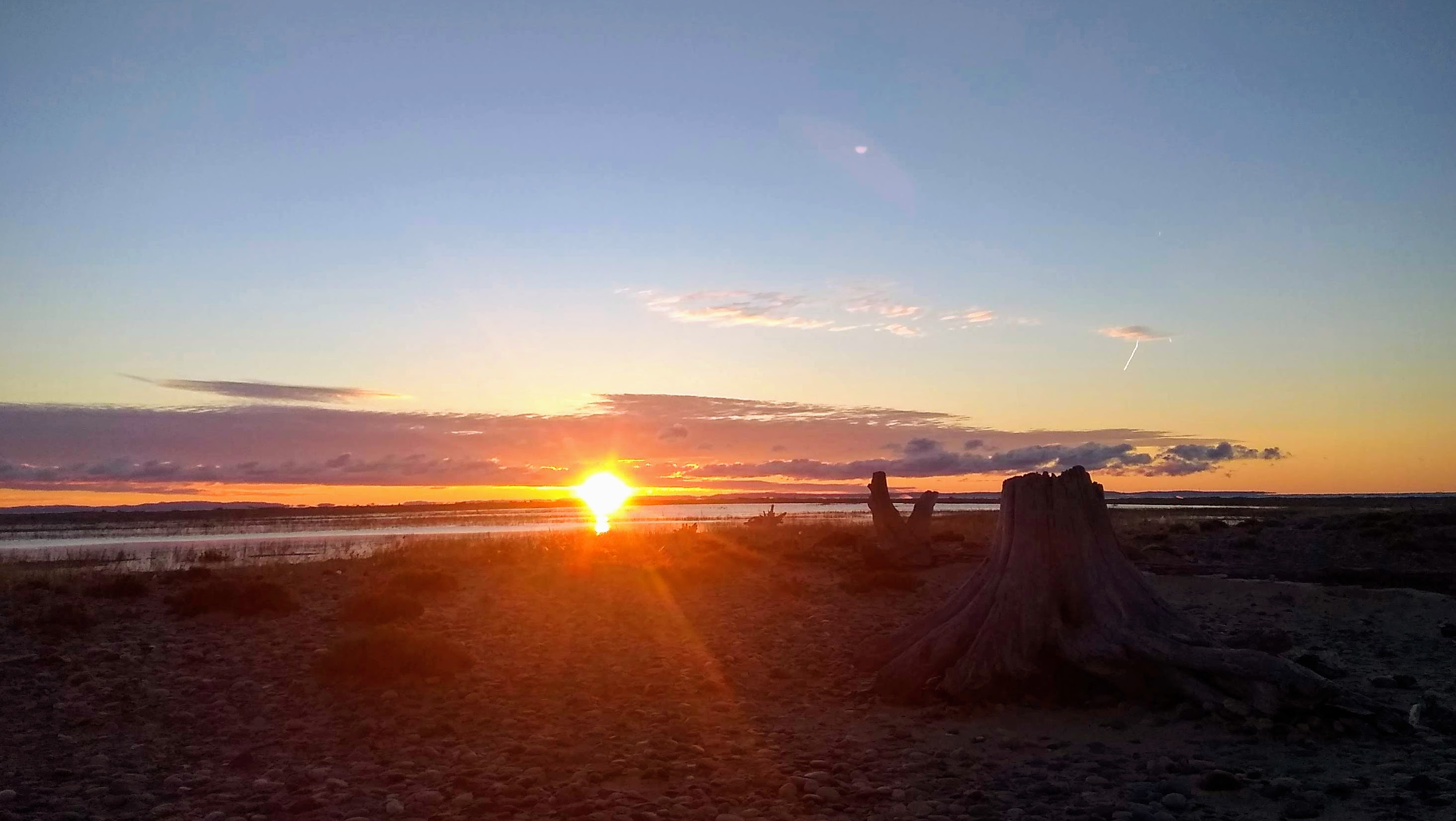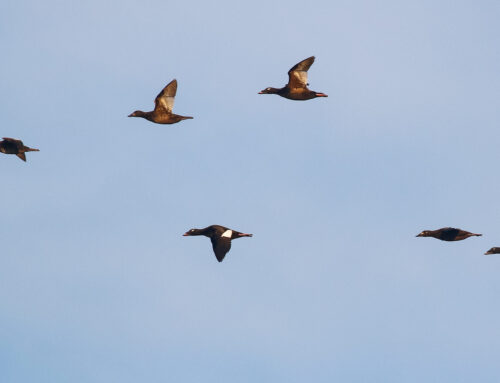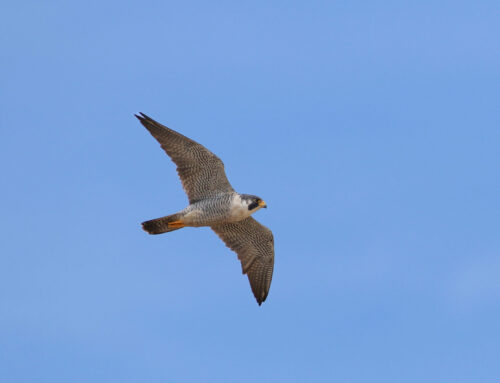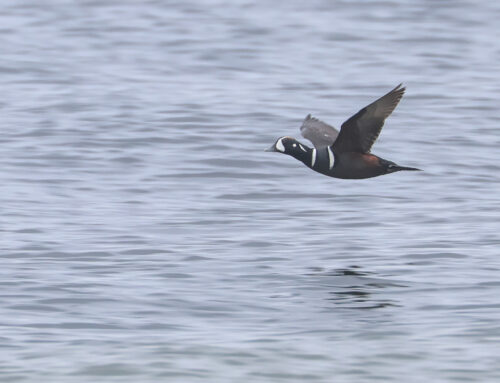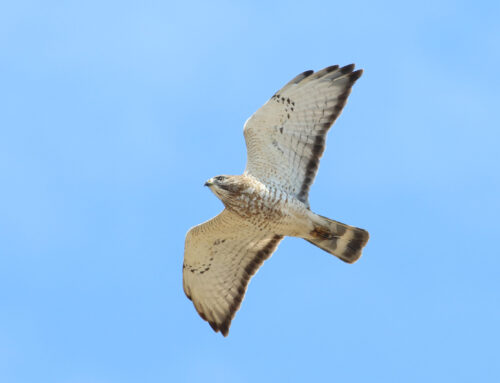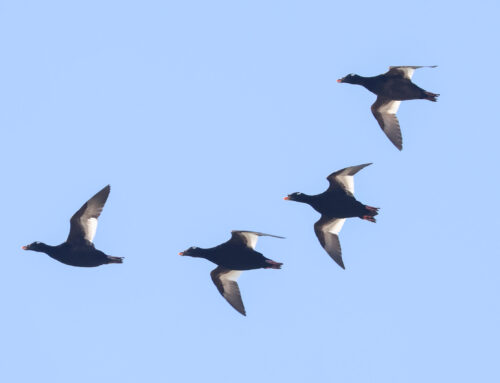Watching waterbirds is always an unpredictable endeavor, and can be quite the exercise in patience. The past week has held great examples of the days that make the seemingly endless hours of tedium all worth it. Last Tuesday began with a strong flight of Aythya and Scoters, along with an great smattering of dabblers for mid-October. In the second hour of the count I witnessed a sight I had never before seen — a pure flock of dozens of Cackling Geese! A couple hours later, the first Canvasback and Pacific Loon for the season zipped by the point.
But the highlight of the day even better. It was one of those moments I’ll certainly reminisce about decades from now, when I’m out on a slow day birding with friends, recounting tales of birds past. Not far offshore, with a White-winged Scoter flying directly behind it to help in sealing the ID, was a first-year King Eider! Eiders have been recorded in ten seasons on the fall waterbird count at Whitefish Point, with an impressive total of 42 individuals prior to this year, and while I had seen Common Eider, the King was a lifer for me. It’s a rare enough bird that I’ll be submitting formal documentation for review by the Michigan Bird Records Committee before acceptance into their database of rare sightings.
Friday’s flight was much more subtle, but over the course of the day I was witness to a fantastic migration spectacle. WIth a total of 4,762 birds counted it was the biggest day of the season so far. Despite the impressive total however, the diversity was low, with 4,559 Long-tailed Ducks making up 96% of the massive flight. As I predicted was imminent in my last blog post, this takes Long-tailed Duck past Red-necked Grebe into first place for the season, at totals of 12,147 and 10,781 respectively.

This chart from Dunkadoo displaying each day’s total volume shows just how busy the past couple weeks have gotten!
Thanks in large part to the recent surge in Long-tailed numbers, the overall volume of migrants has been higher lately. In addition, Scoters continue to be one of the more common species, though their numbers seem to be on the decline. White-winged currently total of 1,523, Surf 528, and Black 127. Aythya ducks also make up a strong component of the flight on and off lately, with Redhead having particularly good days lately, taking them to a total of 1,103 for the season. Overall Aythya total 10,069, with Greater Scaup most common at 1,441 and Redhead in second, followed distantly by Lesser Scaup and Ring-necked Duck.
Dabbling ducks have all but disappeared from the count, and likewise Loons and Grebes have become relatively scarce. The only geese recorded in the past couple weeks have been the aforementioned Cackling and a decent showing of Snow, with flocks up to 32 birds and a trio that spent three days in the pond at the Point bringing their total to a respectable 86.
For a complete look at all the birds tallied this season and to follow along live each day as the data are collected don’t forget to follow closely at Dunkadoo as the final weeks of the season unfold!
Gary Palmer
WPBO Fall Waterbird Counter

